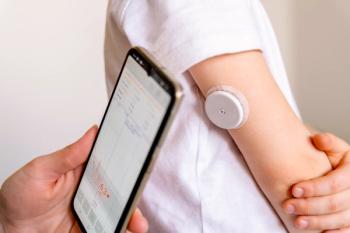
Report Predicts Four Drugs May Increase Health Care Spending by $20.25 Billion
Four FDA-approved products that face no competition may increase health care spending by as much as $20.25 billion, according to a new analysis by Vizient Inc.1
Four FDA-approved products that face no competition may increase health care spending by as much as $20.25 billion, according to a new analysis by Vizient Inc.1
The report focused on the Unapproved Drug Initiative (UDI) and its unintended effects on the market. The UDI was an FDA mandate enacted in 2006 that required unapproved drugs in use prior to FDA review of safety and efficacy to be either approved or removed from the market. Once a previously unapproved drug receives FDA approval, the manufacturers of other unapproved versions are asked to remove their products from the market.1
Although the goal of the UDI was to remove potentially dangerous medications from the market, the report authors noted that most of the products are chemically well-defined, reuqire no research and development, and are widely used in health care settings.1
The researchers used the wholesale acquisition cost (WAC) for all calculations and then estimated and used IQVIA data for all US health care product units purchased.1
According to the authors, the UDI has resulted in $2.66 billion in increased costs already incurred, $8.75 billion in estimated cossts awaiting the UDI decision, and $17.59 billion in remaining exclusivity estimated costs.1
Four of these drugs have been formally approved in recent years: neostigmine methylsulfate, vasopressin (Vasostrict), selenium 40 mcg/mL to selenious acid 60 mcg/mL, and dehydrated alcohol 98% to dehydrated alcohol 99%.1
One product, neostigmine methylsulfate, received de facto exclusivity, meaning the manufacturer is not entitled to additional market exclusivity and the duration of a sole source market is determined by how long it takes other suppliers to file and receive approval. Competition entered the market after 2 years and the authors said the price has since eroded 82% from its highest point. The drug, used to reverse anesthesia, had $60.6 million annual US health care spend prior to the UDI approval. During its exclusivity, the average annual spend jumped to $205.8 million.1
Vasopressin received patent protection through 2035 and its WAC increased by 1644%. For a package of 25, the price increased from $283.25 to $4939. The total increase in US health care spend on the drug is estimated to be $17.8 billion.1
Selenium 40 mcg/mL to selenious acid 60 mcg/mL received 5-year new chemical entity exclusivity through April 2024 and experienced a WAC increase of 1190% on a package of 25. Prior to the UDI decision, the annual US health care spend on the drug was $8.52 million. In 2020, the researchers estimated that the US health care system will spend $110 million.
Finally, dehydrated alcohol 98% to dehydrated alcohol 99% experienced a 668% increase after receiving a 7-year orphan indication. On a package of 25, the WAC increased from $1295 to $9950 and the authors estimated that the US system will spend $215 million on the drug in 2020.1
"Our concern is no in the intent of the UDI, but with its unintended consequences," said Dan Kistner, PharmD, group senior vice president of pharmacy solutions for Vizient, in a statement. "Manufacturer's pricing choices after receiving approval are creating challenges for providers and patients alike in terms of egregious price increases and more vulnerability to supply disruptions."2
REFERENCES
- Financial Consequences of Good Intentions [report]. Vizient Inc. Vizient website, released February 26, 2020. https://newsroom.vizientinc.com/sites/vha.newshq.businesswire.com/files/doc_library/file/UDI_Analysis_US_Market_Spend_FINAL_022420.pdf. Accessed February 26, 2020.
- Vizient Analysis Shows Prices for Existing Drugs Spike After Regulatory Approval, Potentially Increasing Spending by $29 Billion [news release]. Irving, Texas; February 26, 2020. Vizient Inc website; https://newsroom.vizientinc.com/press-release/c-level-leader/vizient-analysis-shows-prices-existing-drugs-spike-after-regulatory-app. Accessed February 26, 2020.
Newsletter
Stay informed on drug updates, treatment guidelines, and pharmacy practice trends—subscribe to Pharmacy Times for weekly clinical insights.




















































































































































































































